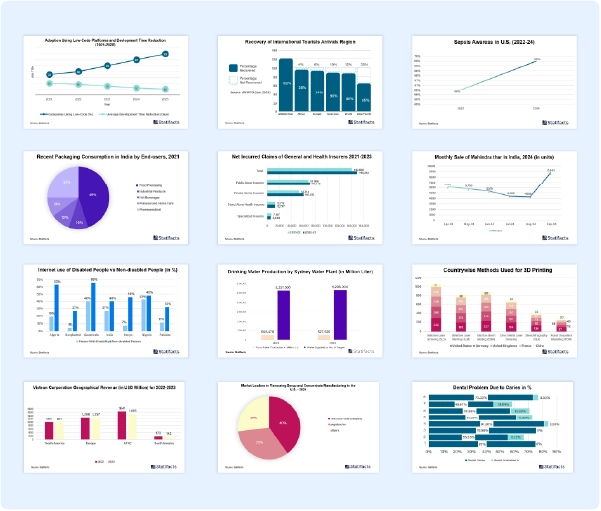The U.S. artificial intelligence in diagnostics market size is calculated at USD 655 million in 2024 and is predicted to attain around USD 4,298.47 million by 2034, expanding at a CAGR of 20.7% from 2025 to 2034.
U.S. Artificial Intelligence In Diagnostics Market Report Highlights
- By component, the software segment dominated the U.S. artificial intelligence in diagnostics market in 2024 and accounted for the highest revenue share, and the segment is also expected to be the fastest growing during the forecast period.
- By diagnosis type, the neurology diagnosis type segment led the U.S. artificial intelligence in diagnostics market in 2024 with the largest revenue share.
- By diagnosis type, the radiology diagnosis type segment is expected to grow at the fastest rate during the forecast period.
The U.S. artificial intelligence in diagnostics market refers to the production, distribution, and application of artificial intelligence (AI) in diagnostics, which is the use of AI systems to detect respiratory diseases based on symptoms and signs, aiming to enhance diagnosis accuracy, specifically in resource-limited settings. Artificial intelligence (AI) diagnostics refers to the use of AI systems in which AI-based HER analysis significantly improves the identification of high-risk patients, leading to more proactive interventions and better patient outcomes.
The integration of AI in personalized medicine extends beyond diagnosis and treatment selection; it also plays an important role in drug discovery. AI technology is highly used to detect fractures or dislocations that are hard to detect using standard imaging techniques with the human eye. AI-based tools can detect subtle in medical images. By using unbiased AI algorithms, trauma patients can receive the best care for a positive outcome. By using AI algorithms to analyze high amounts of medical data and identify patterns and relationships, general AI for medical diagnostics can transform the field of medicine, leading to enhanced patient outcomes and more effective and efficient healthcare systems.
Growing cross-industry collaborations and partnerships driving the growth of the U.S. artificial intelligence in diagnostics market. By stepping outside of their industry, business leaders can give new prospects, find new opportunities, recharge their ideas, and discover new trends that may come to disrupt their industry. By collaborating with cross-industries, researchers can draw upon different perspectives and expertise. This multidimensional understanding enables more complete problem-solving approaches and leads to innovative solutions. Cross-industry collaboration and partnership can lead to shared knowledge, innovation, and the development of common standards, providing a competitive advantage and benefiting the industry as a whole. Cross-sector partnerships allow us to scale impact and leverage the issue expertise, financial resources, broad buy-in, efficacy, and on-the-ground relationships associated with individual sectors. This cross-industry collaboration is the process where individuals from different departments in an organization with different areas of expertise come together to achieve a common goal.
Funding for AI-based startups in diagnostics driving the growth of the U.S. artificial intelligence in diagnostics market. By leveraging these grants, AI and ML startups can accelerate their innovation process, develop more robust technologies, and ultimately bring transformative solutions to the market. At the time of implementing AI solutions may require an initial investment, but the long-term advantages are substantial, making AI a valuable asset for startup success. Startups can use AI algorithms to analyze startup trends, consumer behavior, and competitor strategies.
This allows them to identify new opportunities, understand customer needs, and make informed decisions about product development. AI-based predictive analytics can assess the feasibility of new product ideas and increase R&D investments. AI-based design tools can generate and evaluate product designs based on specified parameters and constraints. Startups can rapidly iterate through design variations, improve performance, and reduce time to market. Startups can use AI-based predictive analytics to plan design decisions and improve product performance, durability, and reliability.
Rising focus on reducing the workload of radiologists, driving the growth of the U.S. artificial intelligence in diagnostics market. Artificial intelligence (AI) assists radiologists by highlighting suspicious areas and improving anomaly detection and localization. When dealing with high volumes of images, another significant benefit of AI in radiology is its ability to classify and prioritize cases, improving diagnosis efficiency. AI’s most significant impact in radiology has been in image analysis.
Advanced algorithms can now process medical images like CT scans, X-rays, and MRIs with unprecedented accuracy and speed, decreasing the odds of diagnostic error and increasing turnaround time. AI provides an understanding of stresses and pressure points and helps to implement measures that drive the team's efficiency. In this way, AI and telemetry data reduce the workload of employees and also allow their personal development in the long term.

